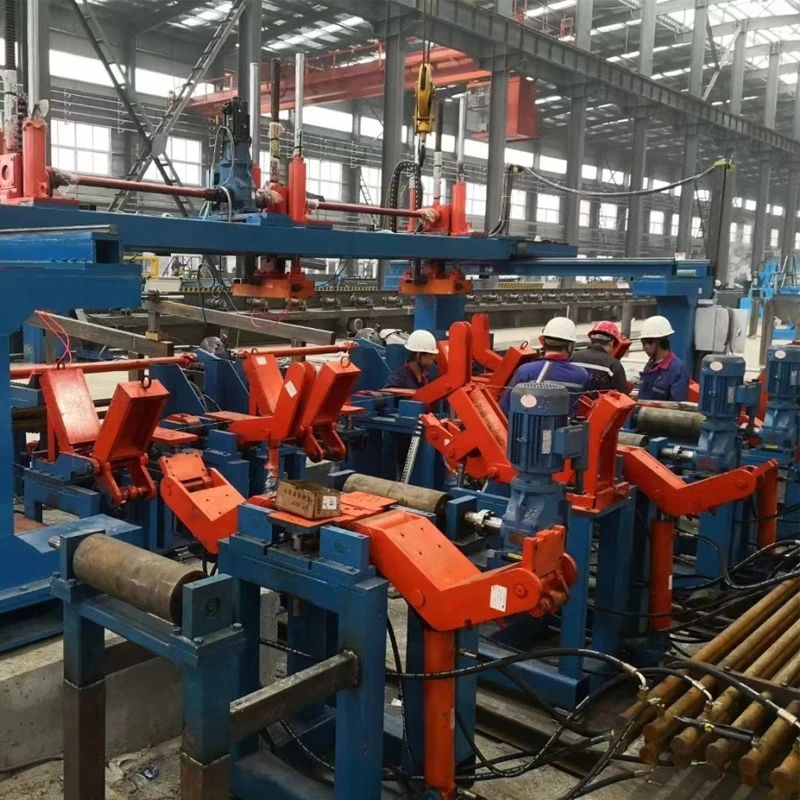Efficient Operation of Manual Uncoiler for Material Handling and Production Line Optimization
The Manual Uncoiler An Essential Tool in Modern Manufacturing
In the fast-paced world of manufacturing and metalworking, efficiency and precision are paramount. One tool that plays a critical role in enhancing efficiency is the manual uncoiler. This device is specifically designed for unwinding metal coils, making it an essential piece of equipment in various industrial applications such as metal fabrication, automotive production, and construction.
Understanding the Manual Uncoiler
A manual uncoiler is a simple yet effective tool used for handling large rolls of material. Typically made of heavy-duty steel, it features a spool or a drum around which the coil is placed. The design allows for the gradual release of the metal strip, ensuring that it unwinds smoothly and uniformly. Operators can manually control the tension and speed of the unwinding process, which is crucial for maintaining the integrity of the material.
The uncoiling process involves several critical steps. First, the operator mounts the coil onto the uncoiler. Once in place, the process of unwinding the coil begins. The operator can adjust the tension to prevent any deformation or damage to the material, which is particularly important when dealing with sensitive metals that require specific handling to maintain their properties.
Benefits of Using Manual Uncoilers
1. Cost-Effectiveness One of the most significant advantages of manual uncoilers is their cost-effectiveness. Compared to automated systems, manual uncoilers are generally more affordable, making them accessible for small to medium-sized enterprises. This affordability does not come at the expense of functionality, as manual uncoilers are capable of handling a variety of materials with ease.
2. Flexibility Manual uncoilers provide a high level of flexibility. Since they do not rely on complex electrical systems or programming, operators can easily adapt them for different coil sizes and material types without extensive training or setup time.
manual uncoiler

3. Control The manual operation allows the user to have complete control over the unwinding process. This level of control is particularly beneficial when working with materials that can be easily damaged or that require a particular unwinding speed to maintain their physical properties.
4. Portability Many manual uncoilers are designed to be portable, allowing manufacturers to move them as needed within their workspace. This is particularly useful in facilities where space is limited or where different production areas require different setups.
Applications in Industry
Manual uncoilers are used across various industries, including sheet metal work, roofing, and general fabrication. In sheet metal work, they are commonly employed to unwind coils of steel or aluminum that will be cut into sheet metal pieces for further processing. In the roofing industry, they help in managing large coils of roofing material, ensuring that the installation process is efficient and that the materials remain undamaged.
Moreover, in automotive manufacturing, manual uncoilers are often used in the production lines where precision and care are critical. The ability to gently unwind materials ensures that the components maintain their integrity during the assembly process.
Conclusion
The manual uncoiler is a vital piece of equipment in the manufacturing sector. Its simplicity, cost-effectiveness, and flexibility make it an excellent choice for businesses of all sizes. Despite the rise of automation in various areas of manufacturing, the manual uncoiler continues to hold its own, proving that sometimes, traditional methods provide the best solutions. As industries continue to evolve, the role of the manual uncoiler remains significant, ensuring that production processes run smoothly and efficiently while maintaining the quality of the materials involved.
-
High Frequency Straight Seam Welded Pipe Production Line|BzZhou Xinghua|Precision Welding&EfficiencyNewsJul.30,2025
-
High Frequency Straight Seam Welded Pipe Production Line - BzZhou Xinghua|Precision Engineering&EfficiencyNewsJul.30,2025
-
High-Frequency Straight Seam Welded Pipe Production Line-BzZhou Xinghua Machinery Equipment Manufacturing Co., LTD.NewsJul.30,2025
-
High-Frequency Straight Seam Welded Pipe Production Line-BzZhou Xinghua Machinery Equipment Manufacturing Co., LTD.|Precision Manufacturing, High EfficiencyNewsJul.30,2025
-
High Frequency Straight Seam Welded Pipe Production Line-BzZhou Xinghua Machinery Equipment Manufacturing Co., LTD.|Precision Steel Pipe Manufacturing&Industrial EfficiencyNewsJul.29,2025
-
High-Frequency Straight Seam Welded Pipe Production Line-BzZhou Xinghua Machinery Equipment Manufacturing Co., LTD.|Precision Steel Pipe Manufacturing&Industrial EfficiencyNewsJul.29,2025


